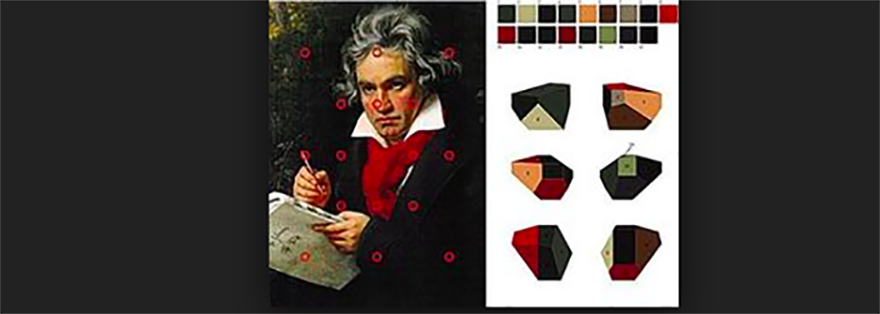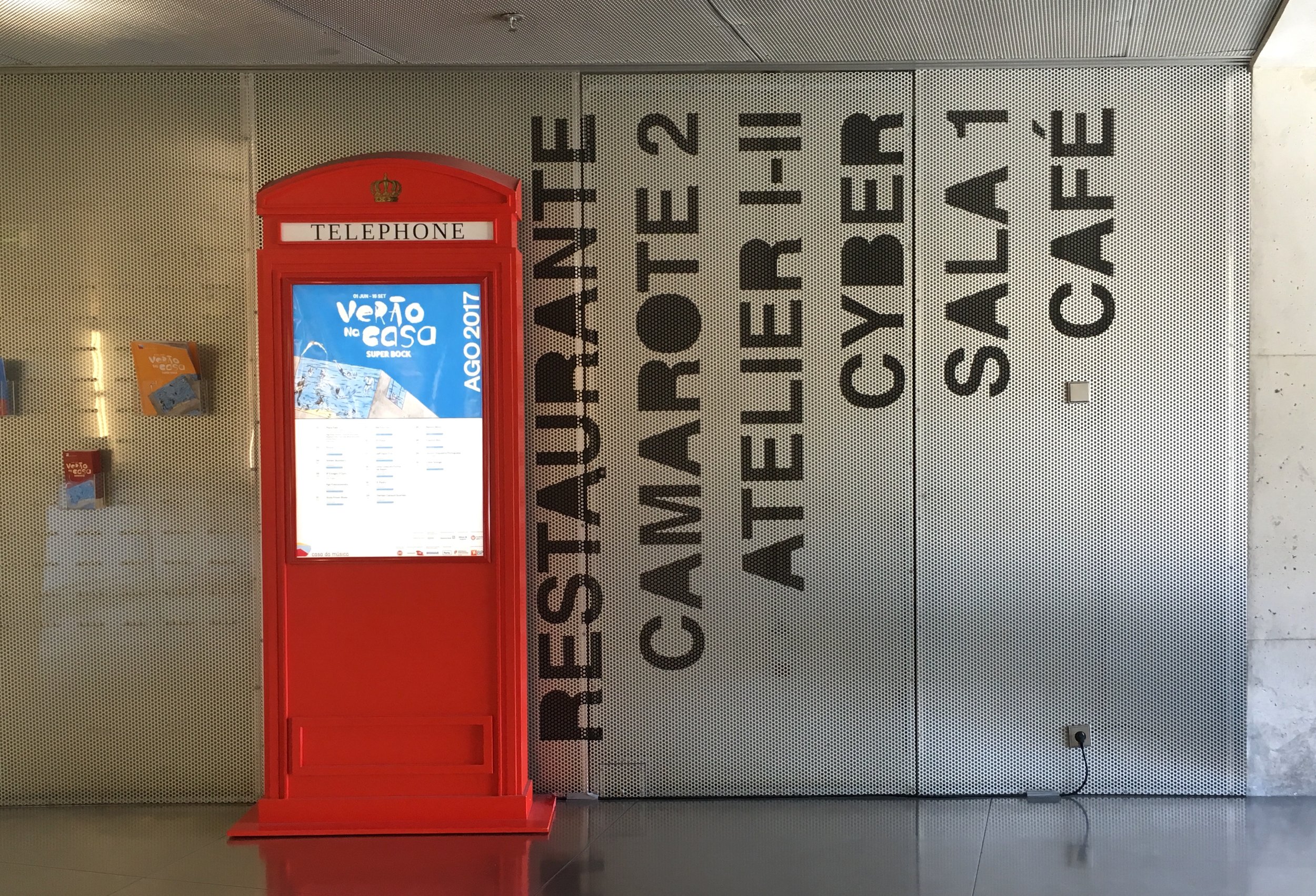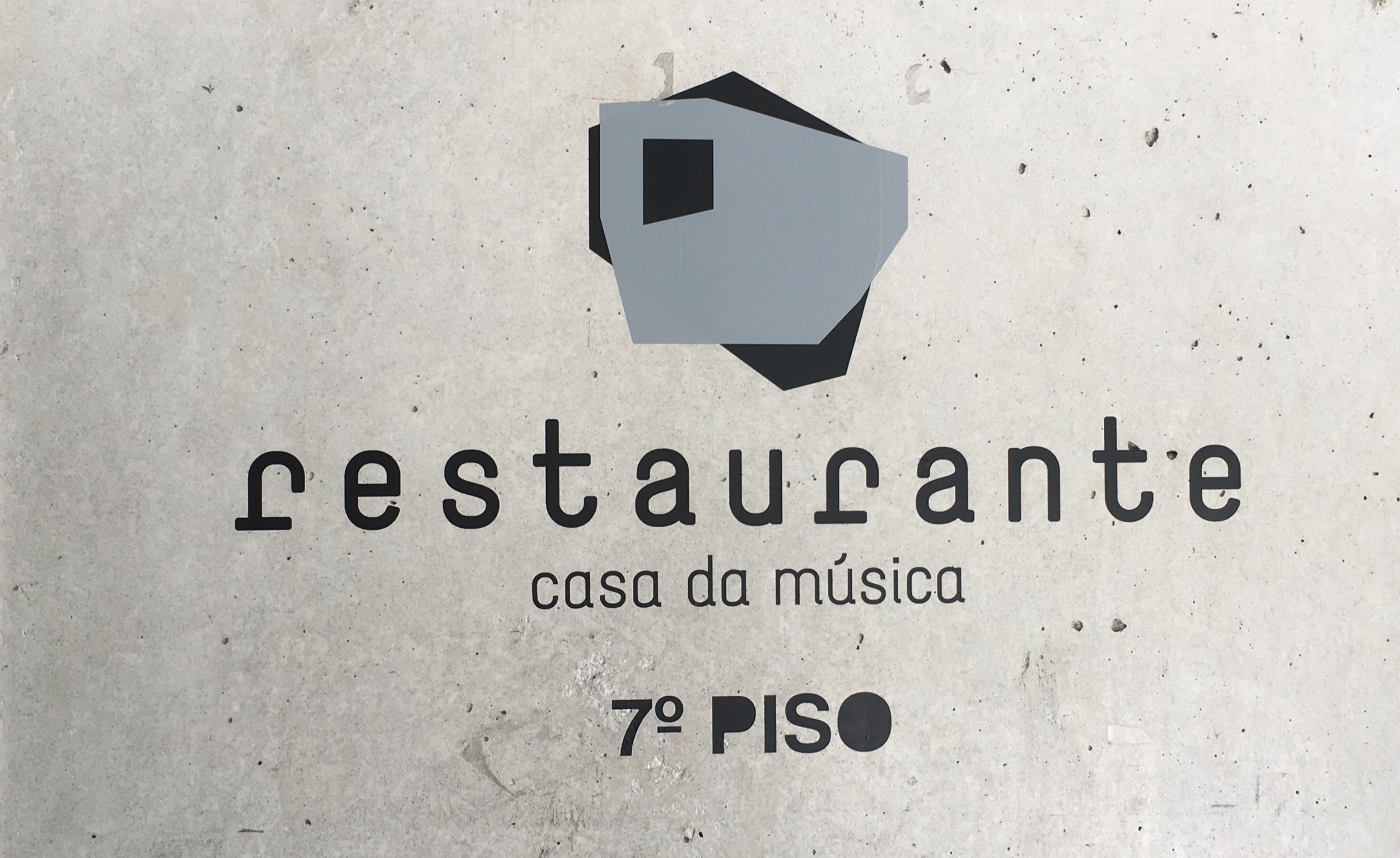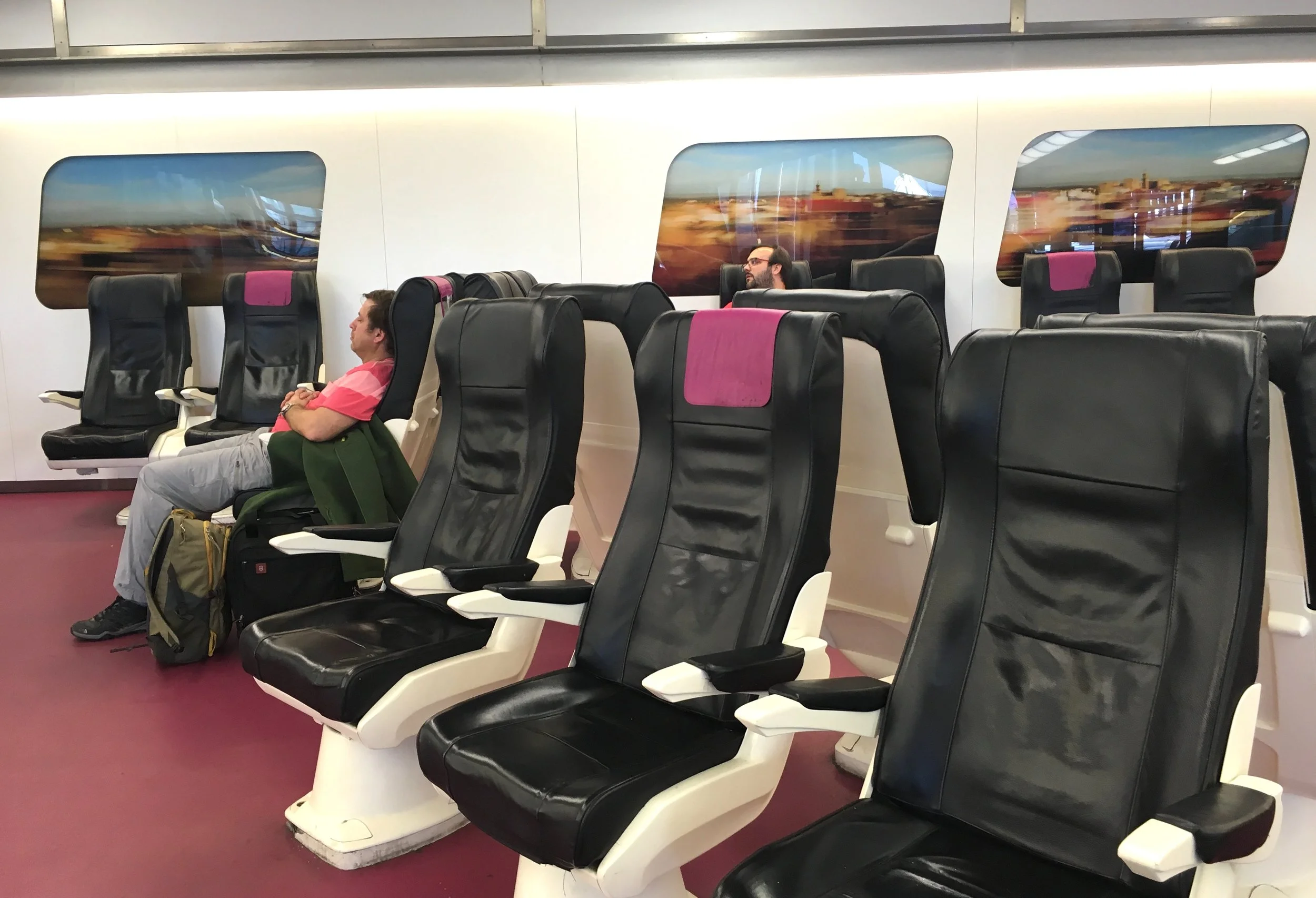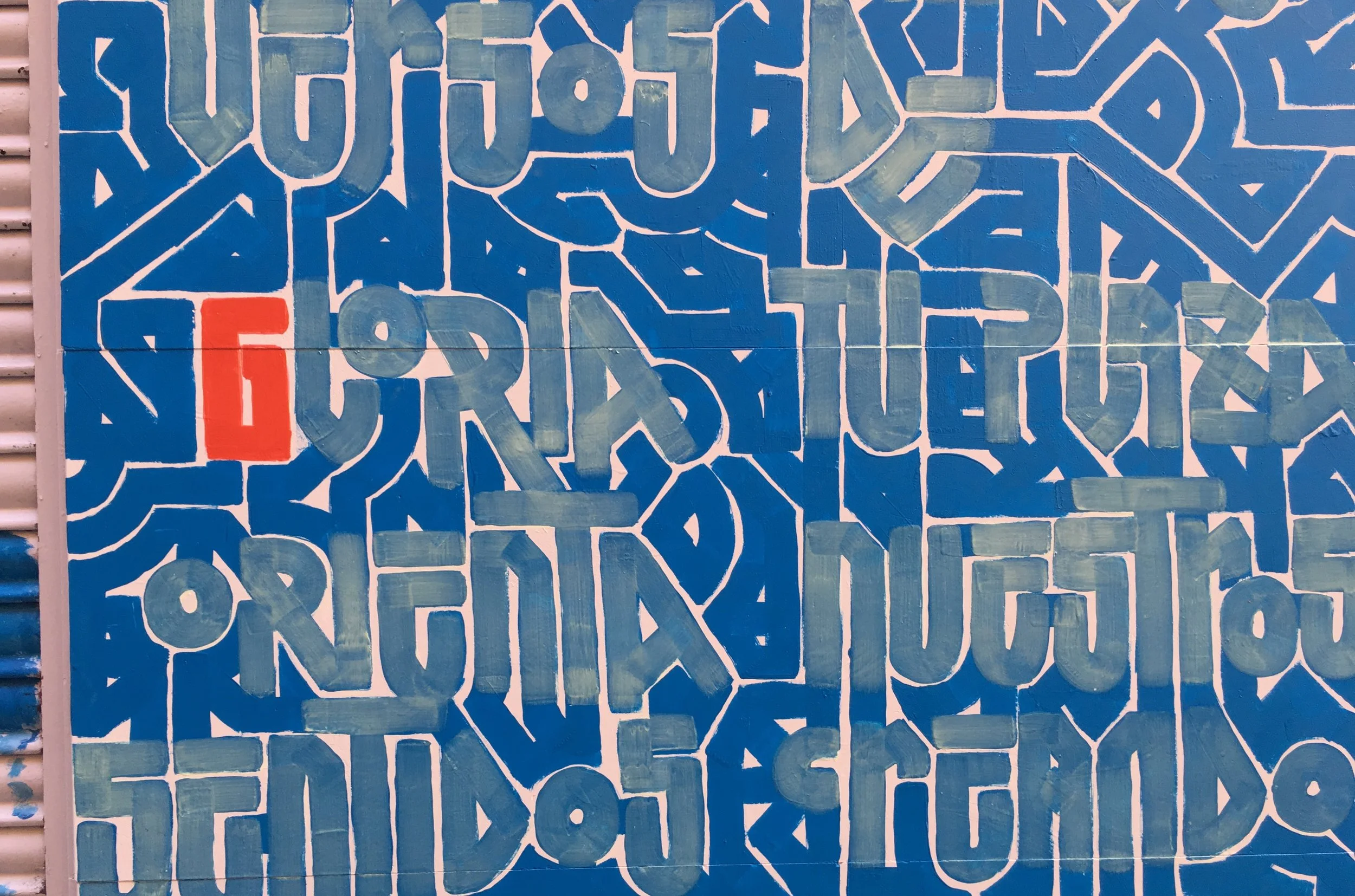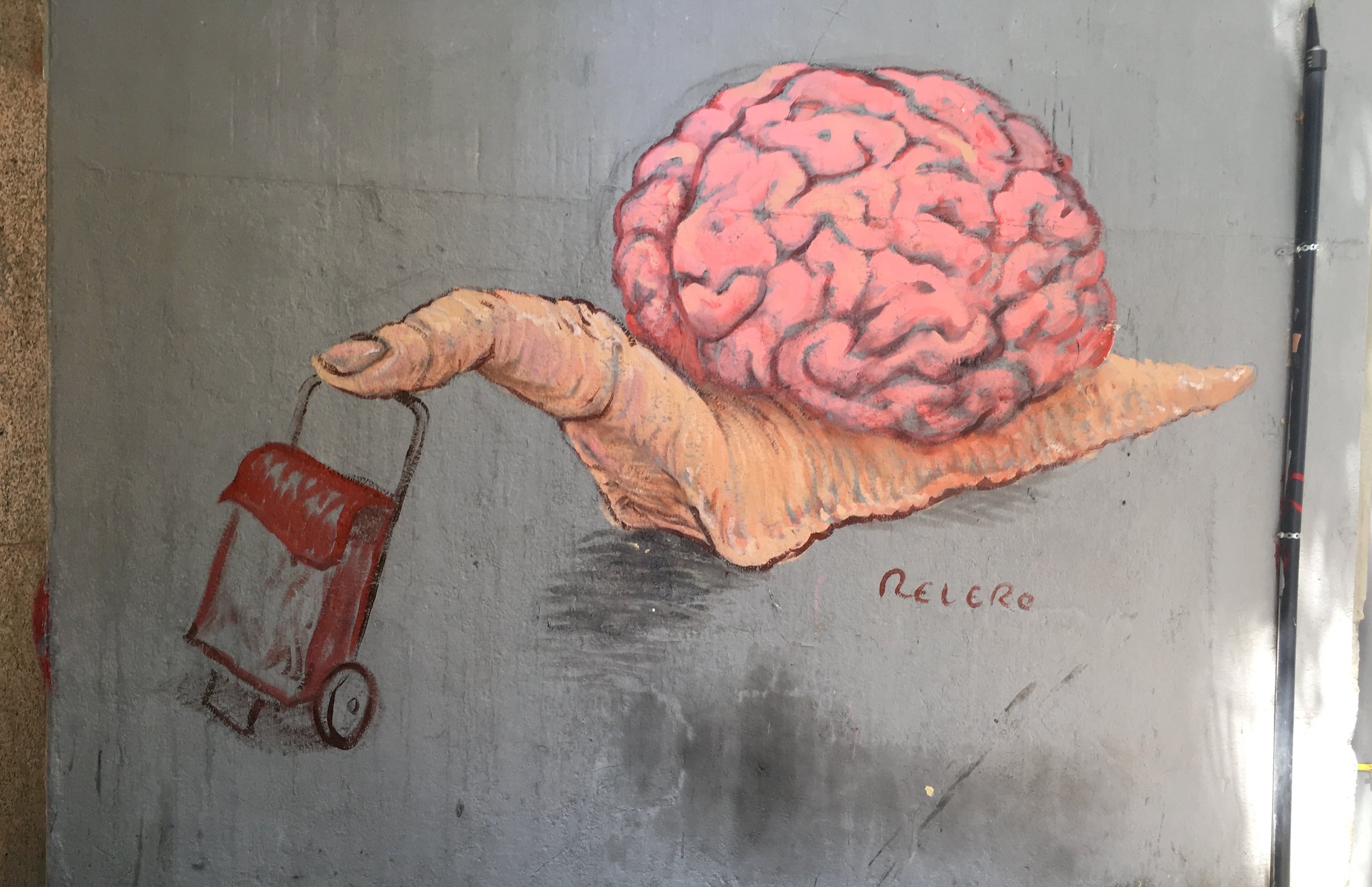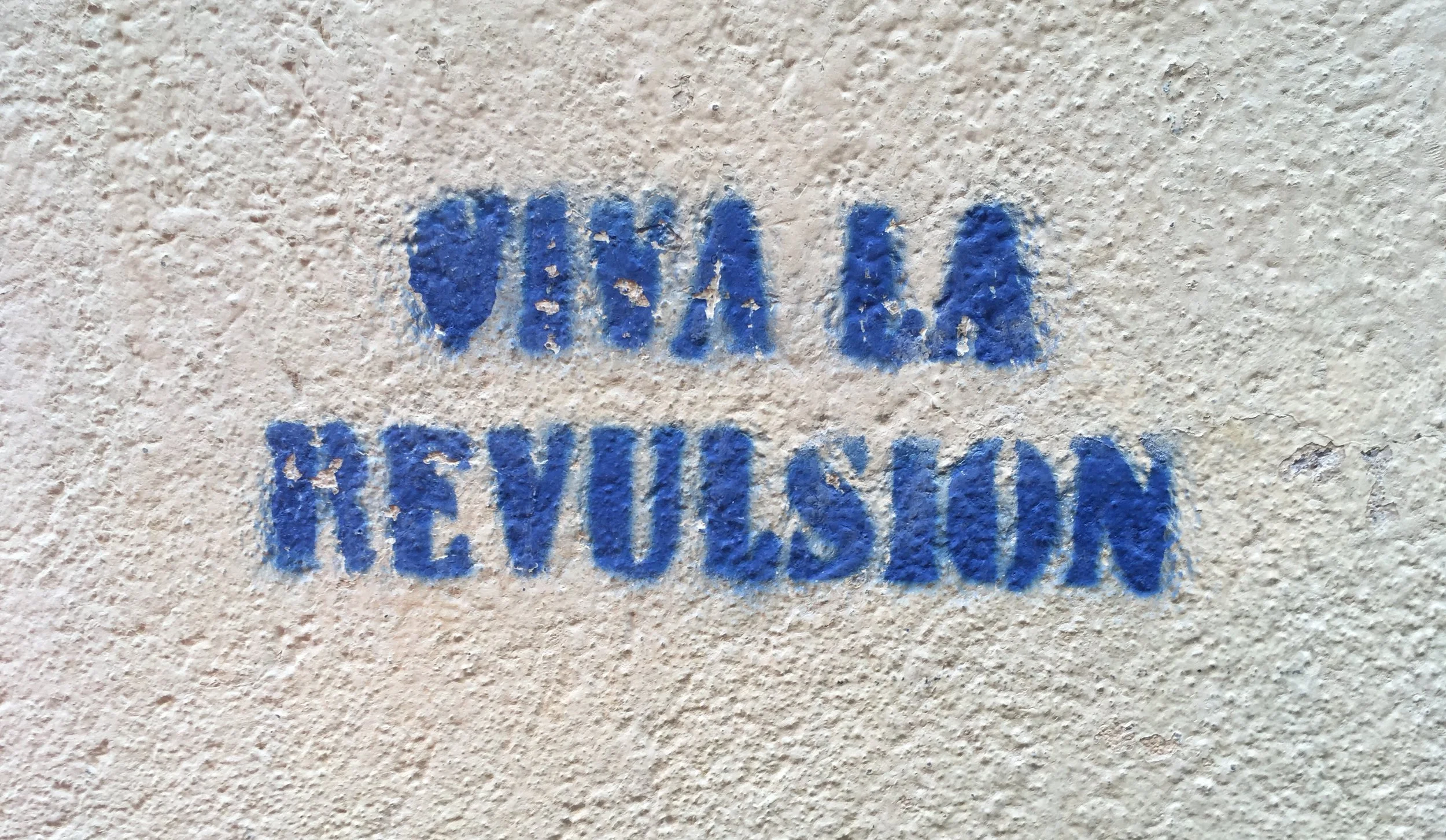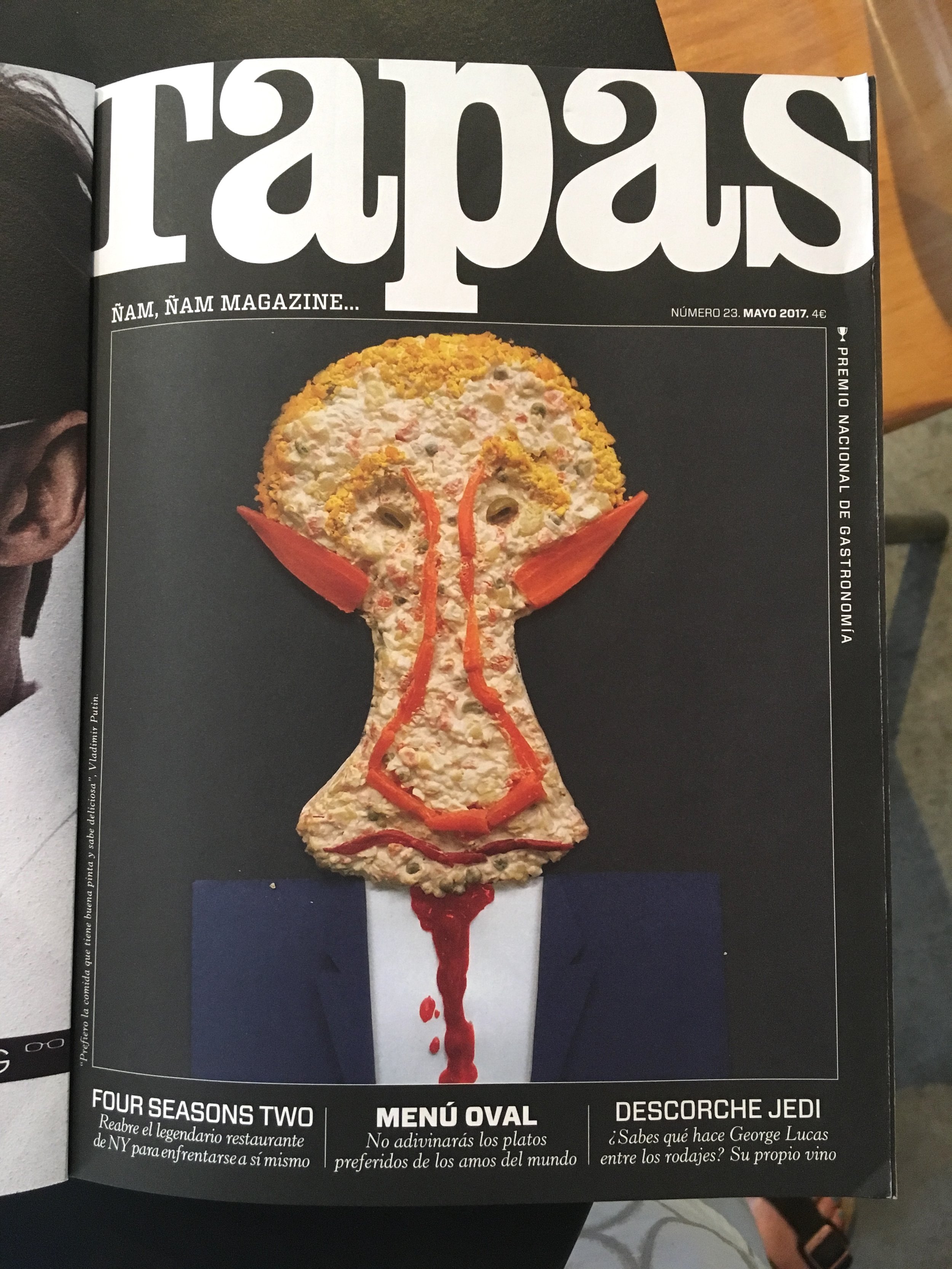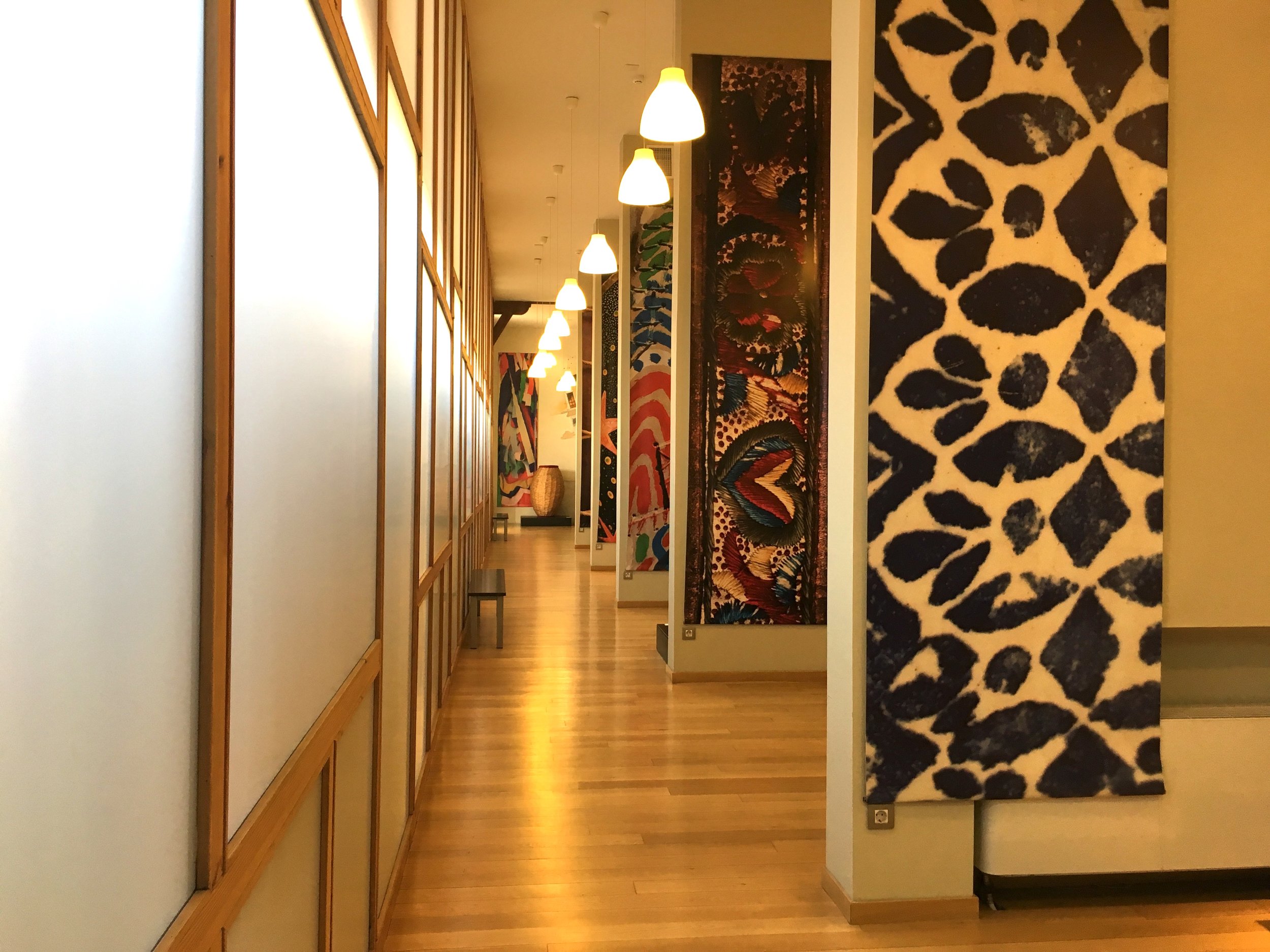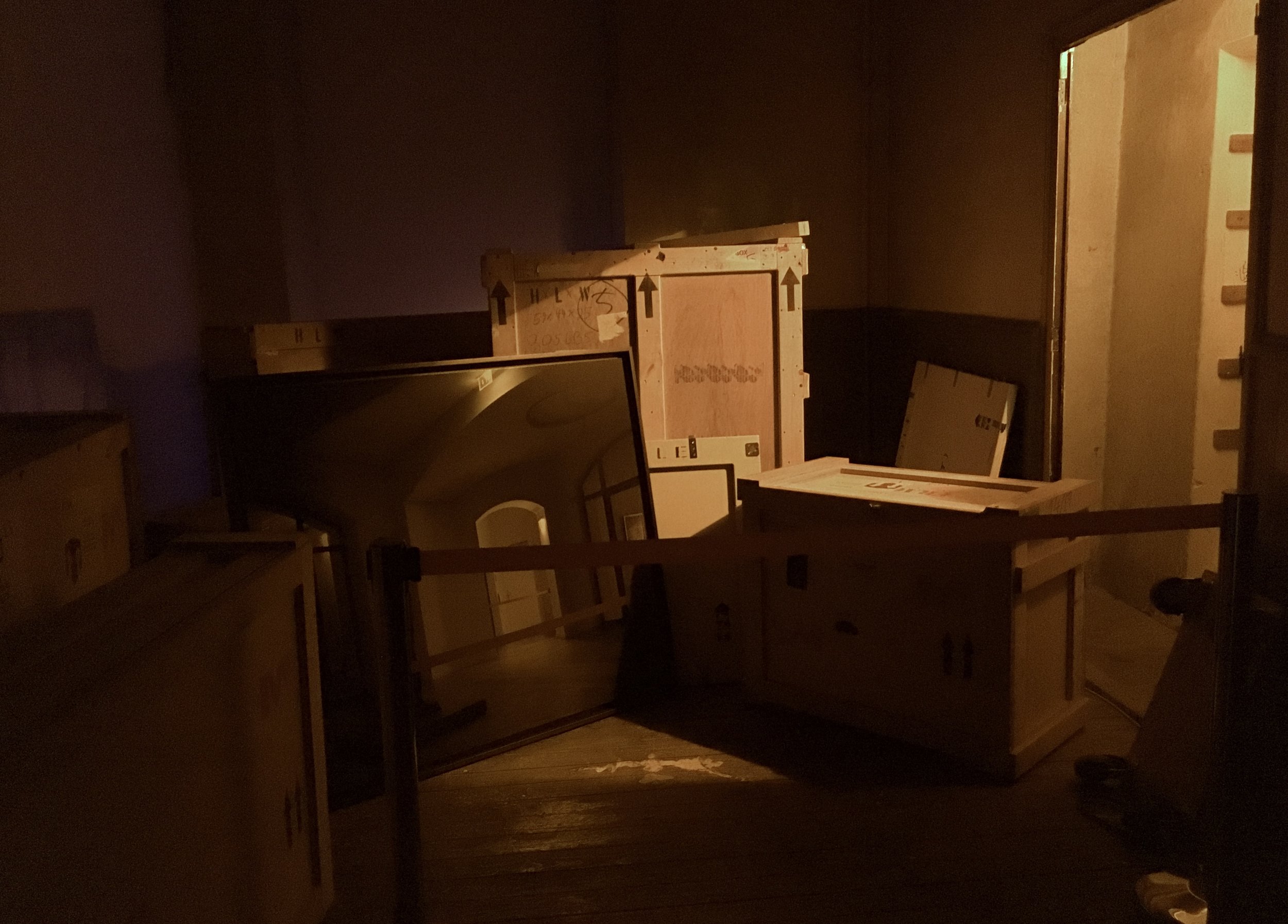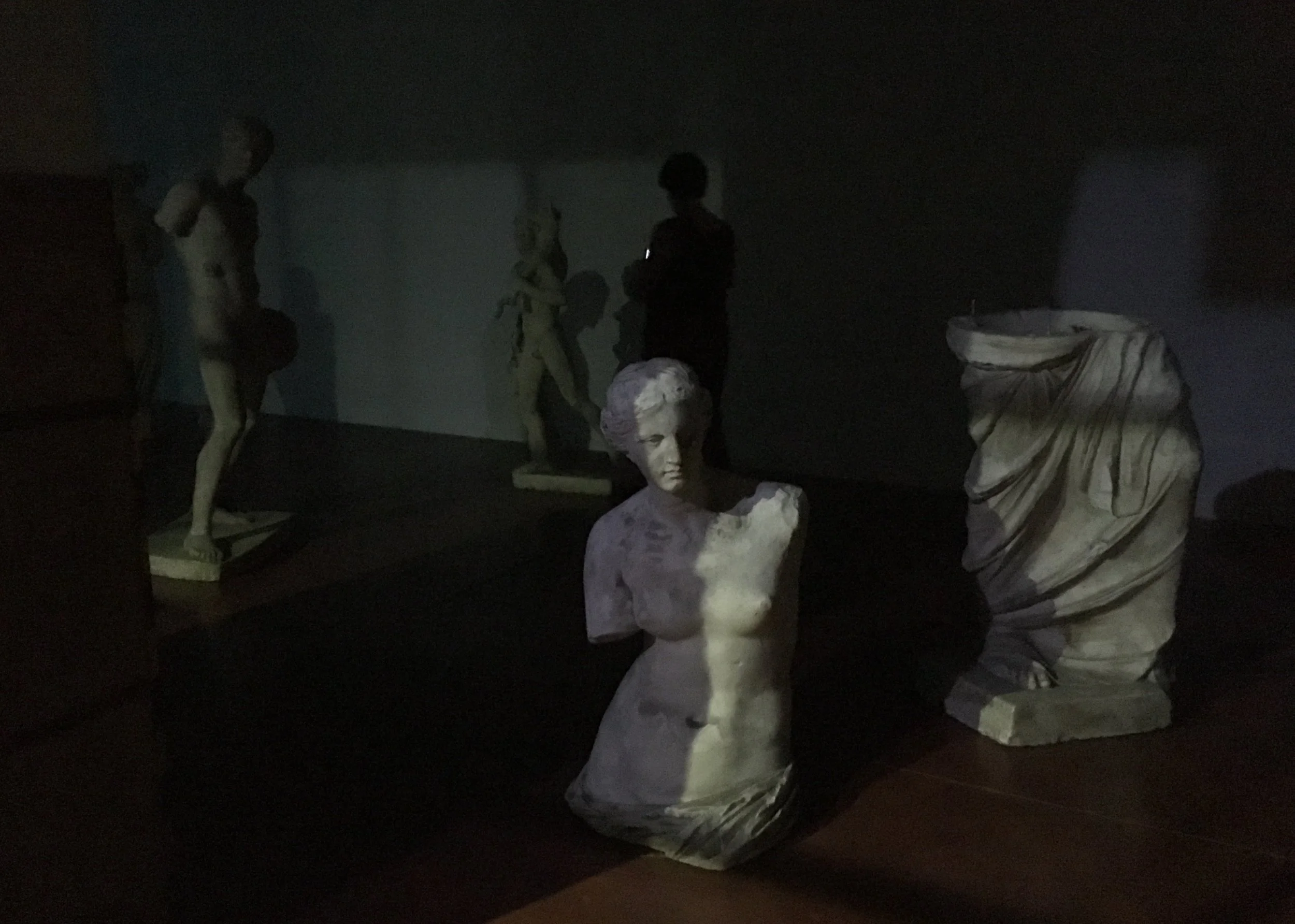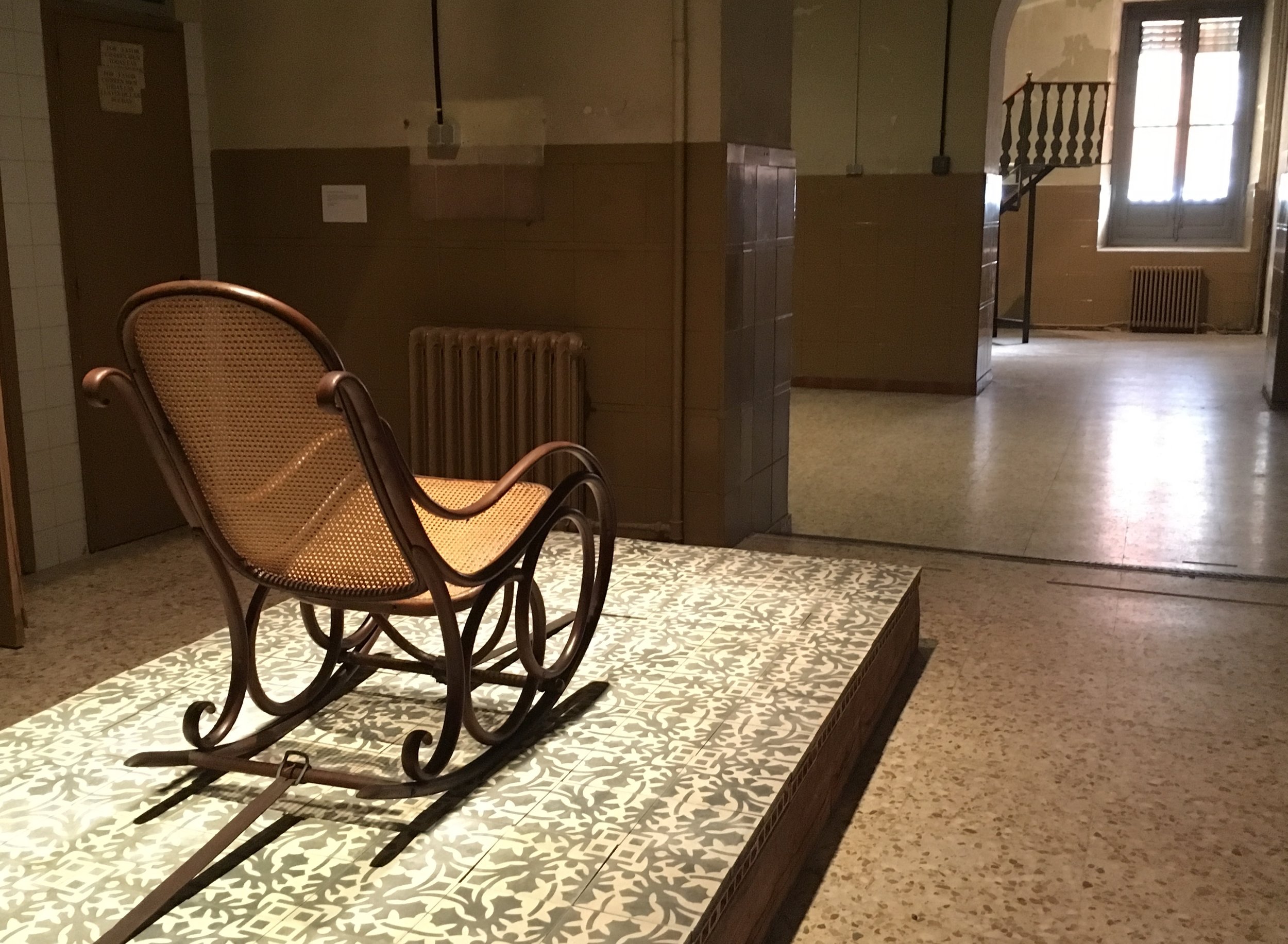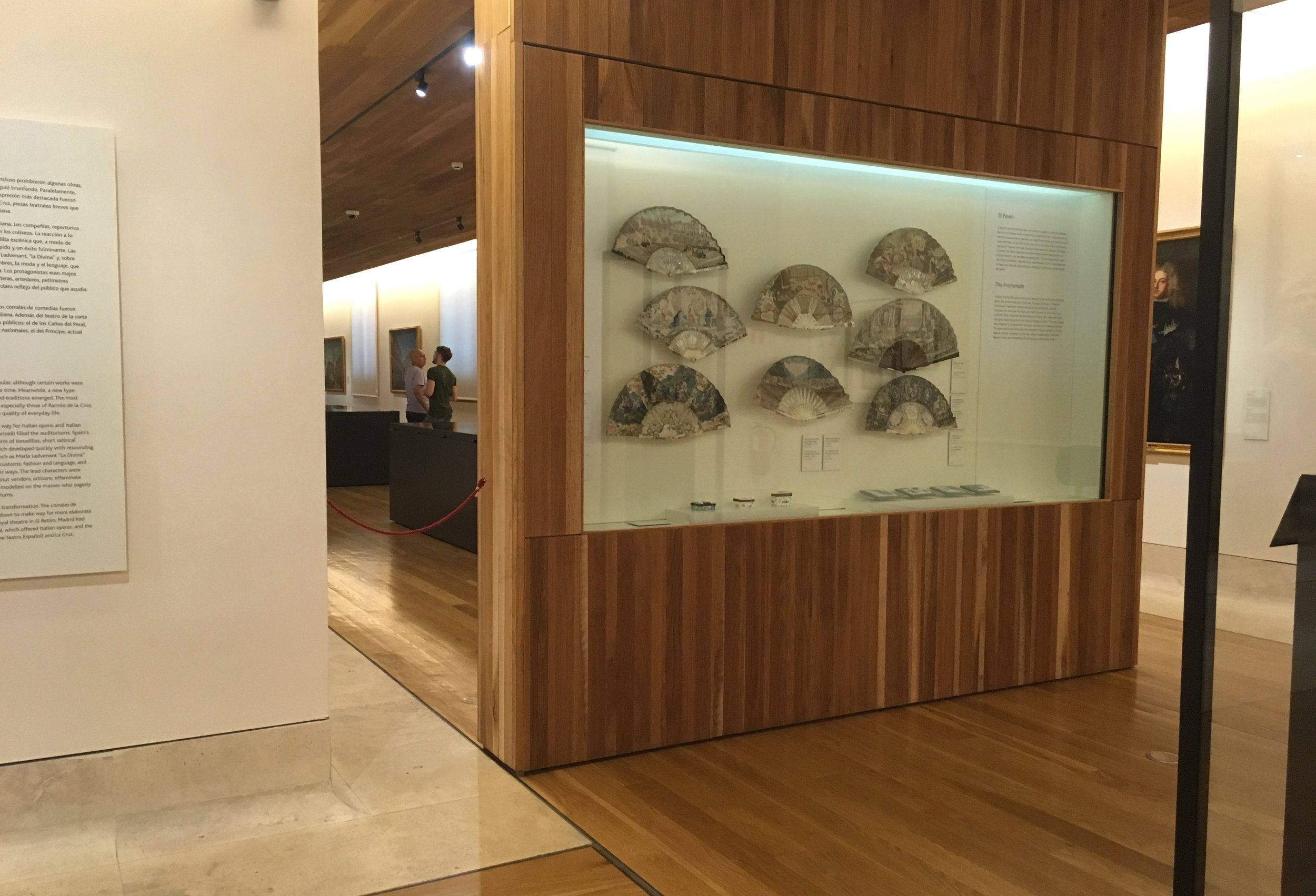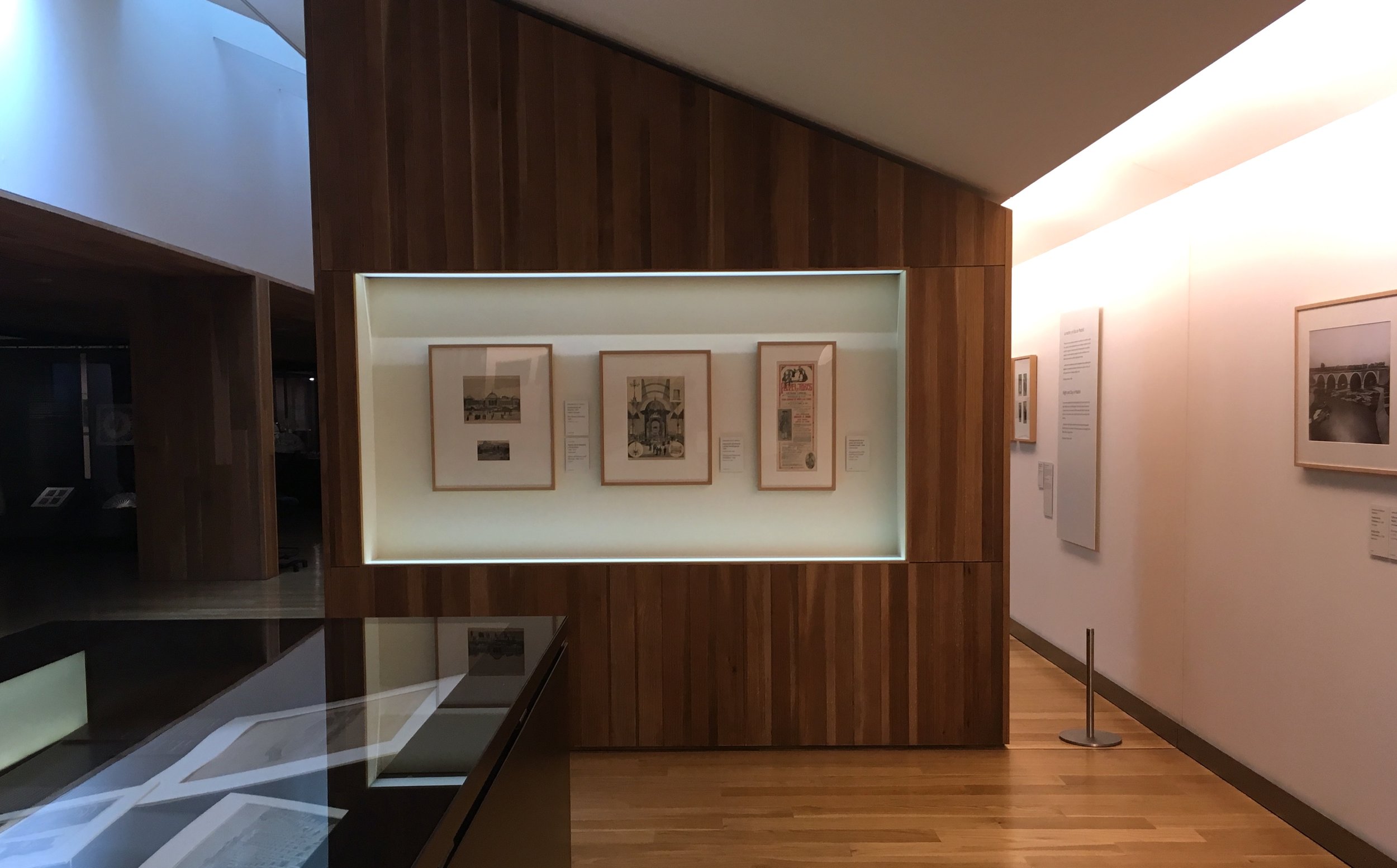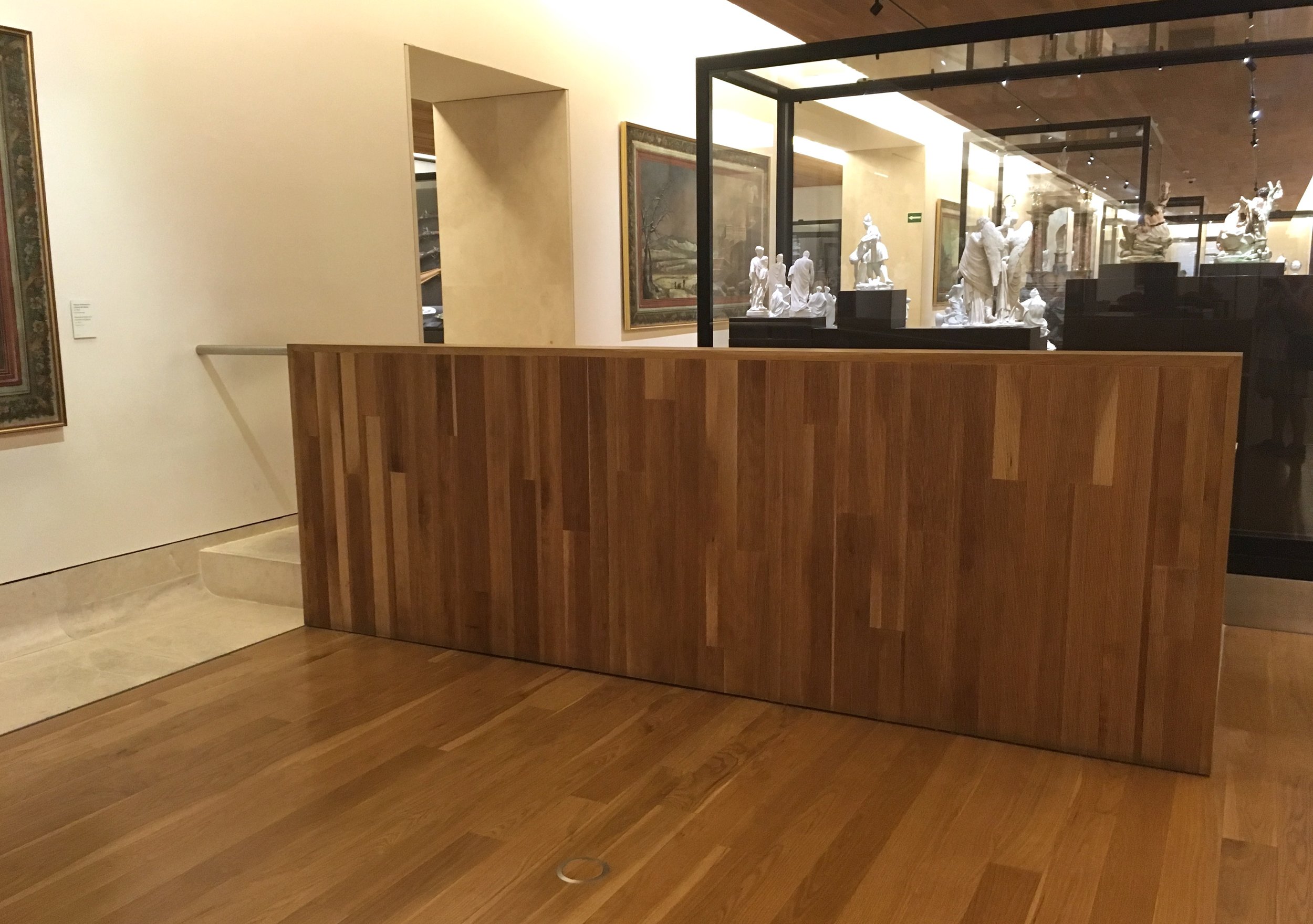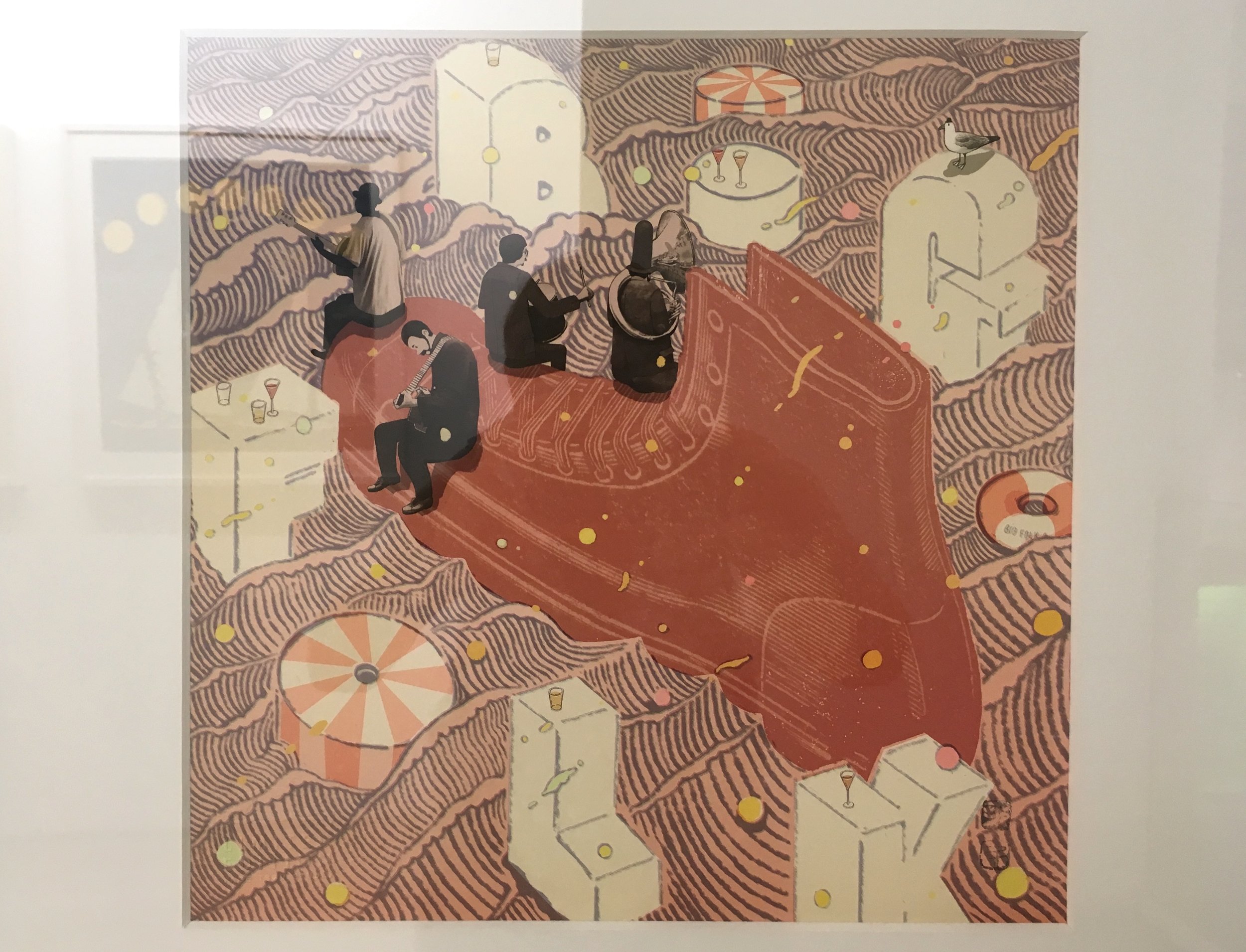Misericordia (Porto)
Porto, Portugal. Founded in 1499, the Holy House of our Lady of Mercy cared for the poor and sick in Porto for 500 years. The building is now the Museu da Misericordia do Porto (MMIPO) , which includes the beautiful church next door. There are various types of design drama here. The first is between the modern exhibition design and the old architecture, art and artifacts. Ribbons strung across the Rua das Flores announce the museum's entry.
The centerpiece of the museum is the "Fons Vitae" painting, depicting christ's blood as the fountain of life. A touch screen to the side allows visitors to enlarge details of the painting
"My Blood is Your Blood" by contemporary sculptor Rui Chafe, is a thick black artery that passes through the upstairs wall of the room, and drips blood onto the street below.
A tapered tube aiming out the window points to an important church on the next hill
The second contrast is between the small white rooms and the black display structures that fill them. The alcoves are tight and convoluted in places to maximize space along narrow walk ways. Unfortunately numbers are used as titles.
Many of the paintings are large but can't be seen from a distance. It's only possible to see parts of them, up close, or the whole painting at an awkward angle.
This effect is the third drama, contrast of scale, which they fully embraced, exaggerating the contrast by blowing up some of the painting details on walls here and there.
The fourth drama is the uncentered displays, with angled panels to insets or vitrines.
The fifth drama is the lighting, using side spots and delicate vertical tubes.
They host modern art installations in the central atrium, itself an airy contrast to the small rooms.
The museum opens directly into the church balcony above and visitors can loop through the church below



























